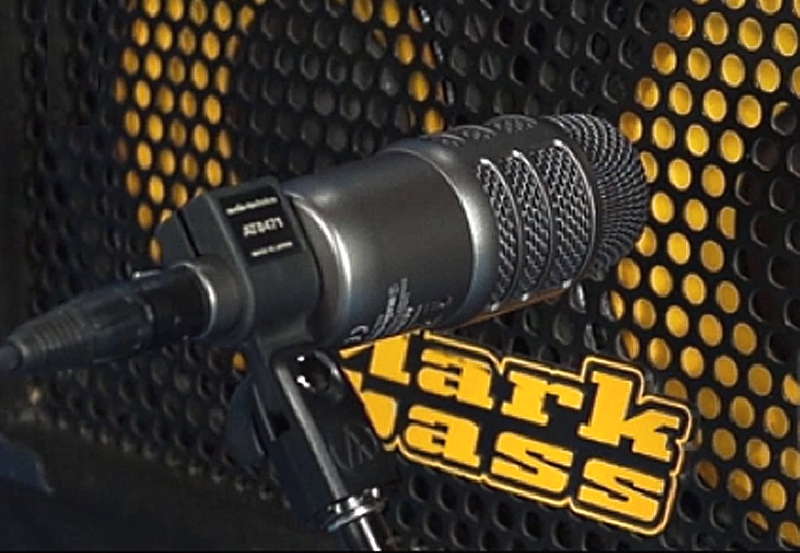
Going Low
Bass amps present challenges because they go far deeper and get louder in the low frequencies than many “standard” instrument mics can handle. Guitar fundamental frequencies run from 82.4 Hz on the low E string to 320.6 on the high E string. Four-string bass guitars fundamental tunings are 41.2 Hz on the low E to 98 Hz on the high G, with five-string basses adding a low B at 30.8 Hz and six-string models adding a high C at 130.8 Hz.
Mics need to be able to handle high SPL at low frequencies, so kick drum mics are often employed to mike bass cabinets. Models such as the Shure BETA 52, Heil Sound PR40 and AKG D112 “football mic” (so named because of its distinct head shape) are often seen in front of bass cabinets.
Dual-element mics can also work well on bass amps. They combine dynamic and condenser elements in a single housing and allow the user to mix and blend to taste. By mounting the capsules right next to each other, they’re aligned to ensure phase coherence between the two individual outputs. The Audio-Technica AE2500 and Lewitt DTP 640 REX are examples.
“Combo” amps with a single 15-inch (or smaller) speaker or speaker are popular with bass players for practice, as well as wedding- and jazz-type gigs. Single cabinets with 15- or 18-inch speakers are also used by some bass players, but more common are ones containing four 10-inch speakers.
The theory is that the smaller speakers can reproduce the high end better than a single larger-diameter cone, and by placing four in a cabinet, they can combine and push out the low end. Many of these cabinets also include a high-frequency tweeter in the center to help reproduce harmonics.
Bass players may use more than one type of cabinet, such as a 4 x 10 atop a single 15- or 18-inch box. The two may be used with a crossover network, so both may need to be miked to pick up the entire spectrum. I place mics on bass cabinets the same as on any other cabinet, about halfway between the cone edge and center of the driver and about 2 inches from the cone. This usually results in the mic being only about .5 inches away from the grille. Some techs, however, prefer to move bass mics back a bit, away from the grille, to pick up more of the cabinet and porting.
The Direct Route
More common for bass is to feed it direct via a DI box. In its most basic form, a DI takes an unbalanced high-impedance signal (i.e., from an electric guitar or keyboard) and converts it to a balanced low-impedance signal that can run down the snake and into a mic preamp in a console channel.
If the high-impedance signal is not converted to a low-impedance balanced signal, it can pick up noise. Also, running a high-impedance signal at longer distances (like down a snake to front of house) can attenuate higher frequencies.
DI boxes are available in two styles: passive and active. Passive designs use a transformer that performs impedance matching and balancing, essentially creating a “magnetic bridge” for audio to pass. They don’t require a battery or phantom power. The quality of the sound depends mainly on the quality of the transformer with good ones sounding far better than cheap ones.
When given a hot input signal, passive styles saturate instead of clipping like their active counterparts, resulting in a “warmer” sound that some may actually strive for. Better passive designs use a shielded transformer to help reject any interference from entering the unit.
Note: Don’t place a passive DI atop an instrument amplifier because the amp transformer’s magnetic field can interfere with the magnetic field of the DI’s transformer, causing noise. Most DI models add a ground lift switch and an output or loop-thru that facilitates connection of the instrument to the stage amplifier.


